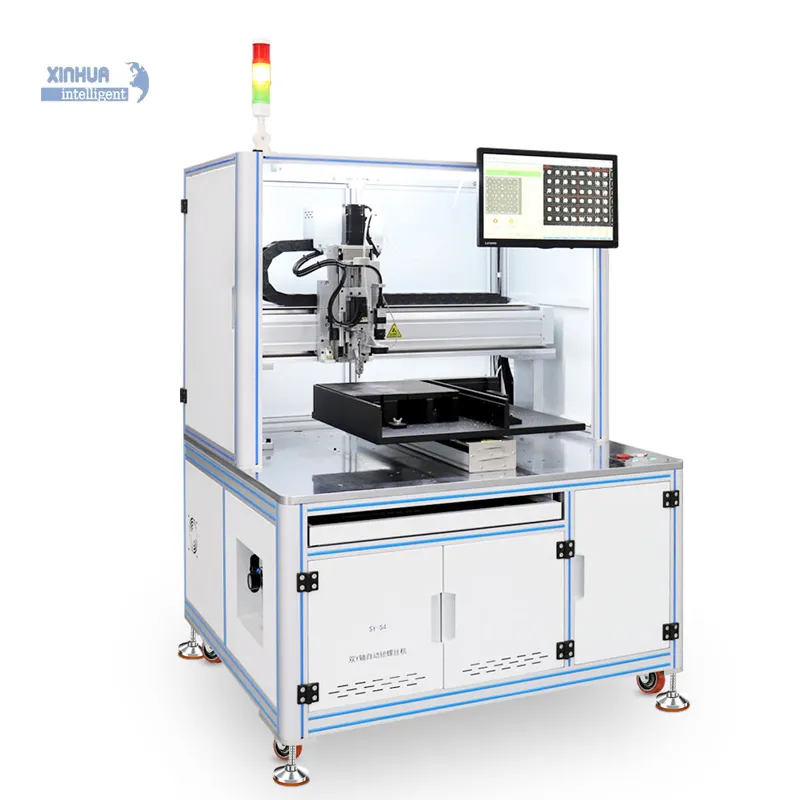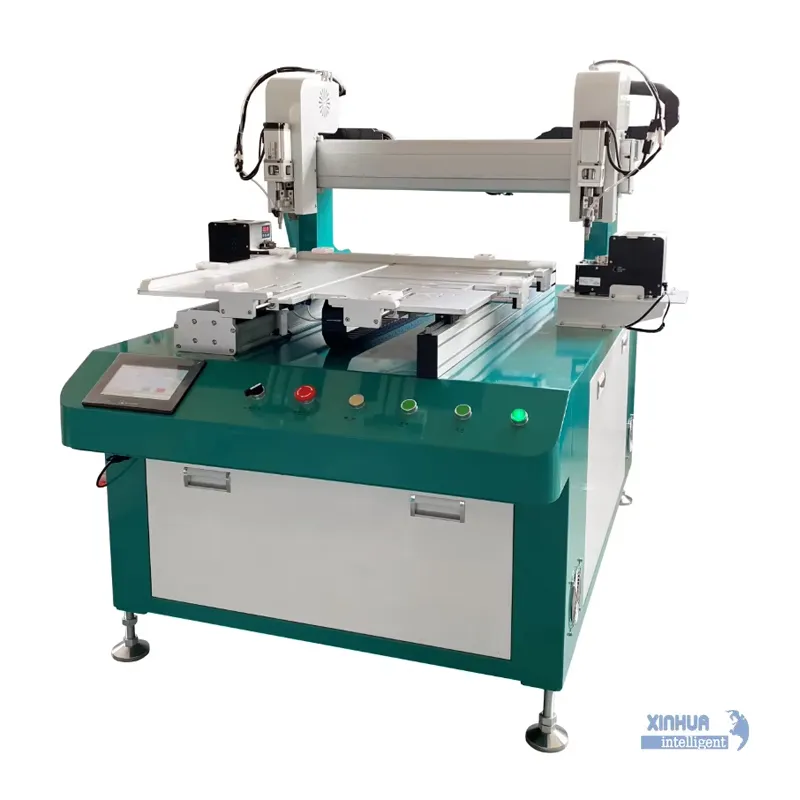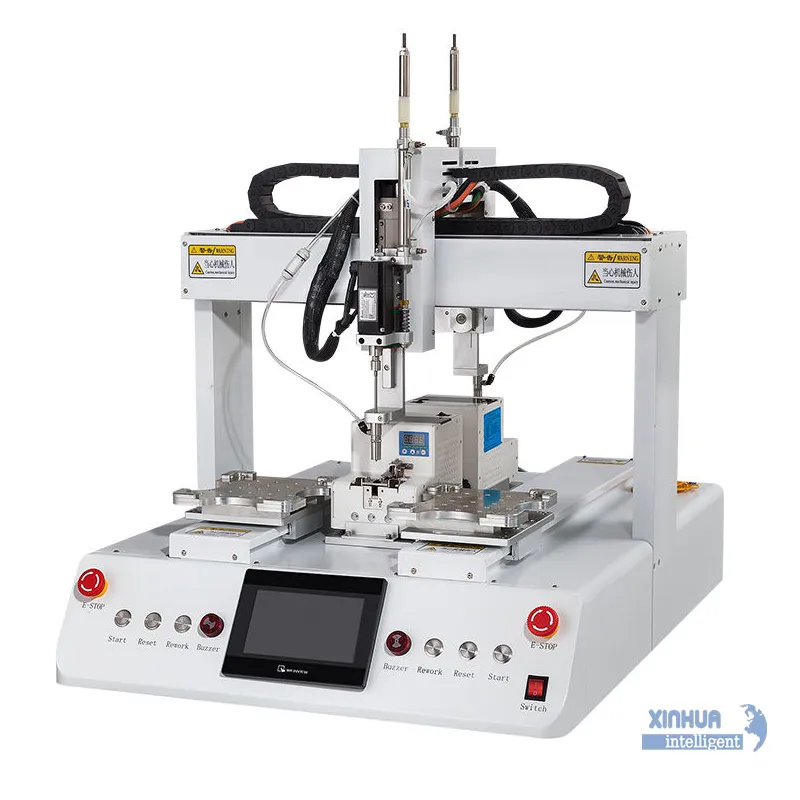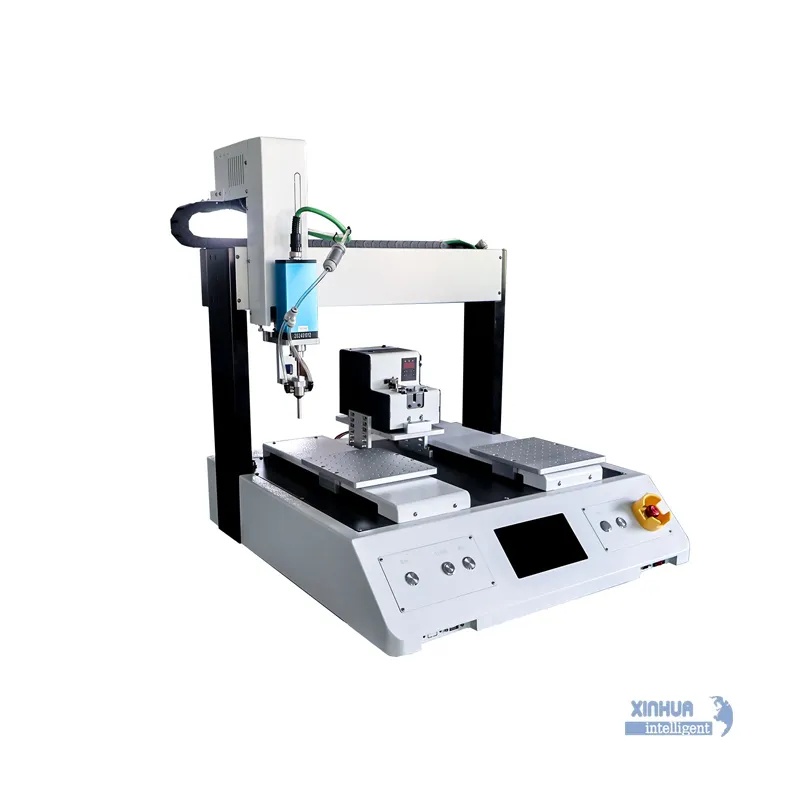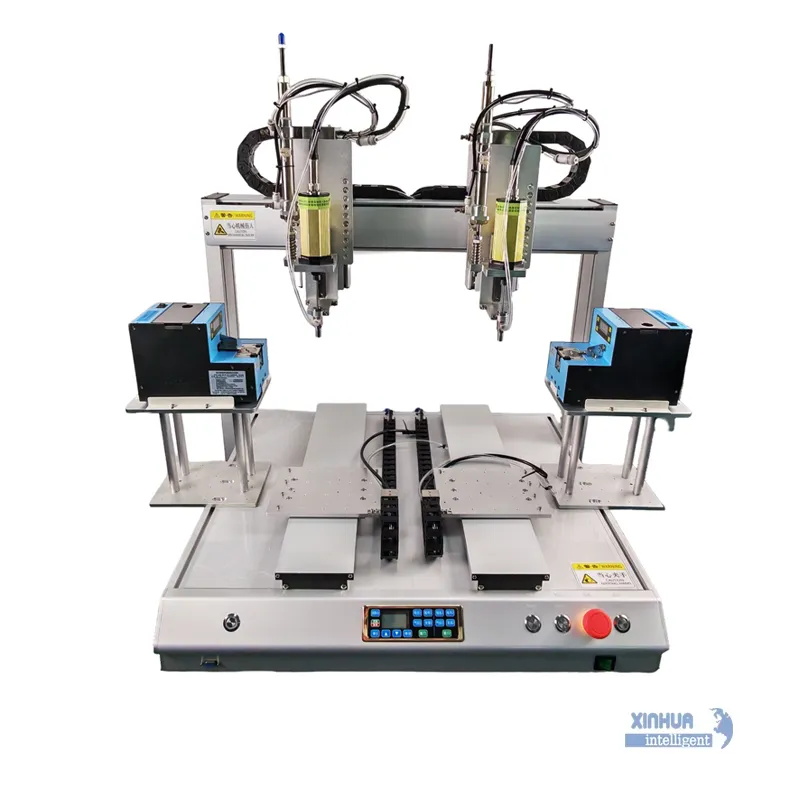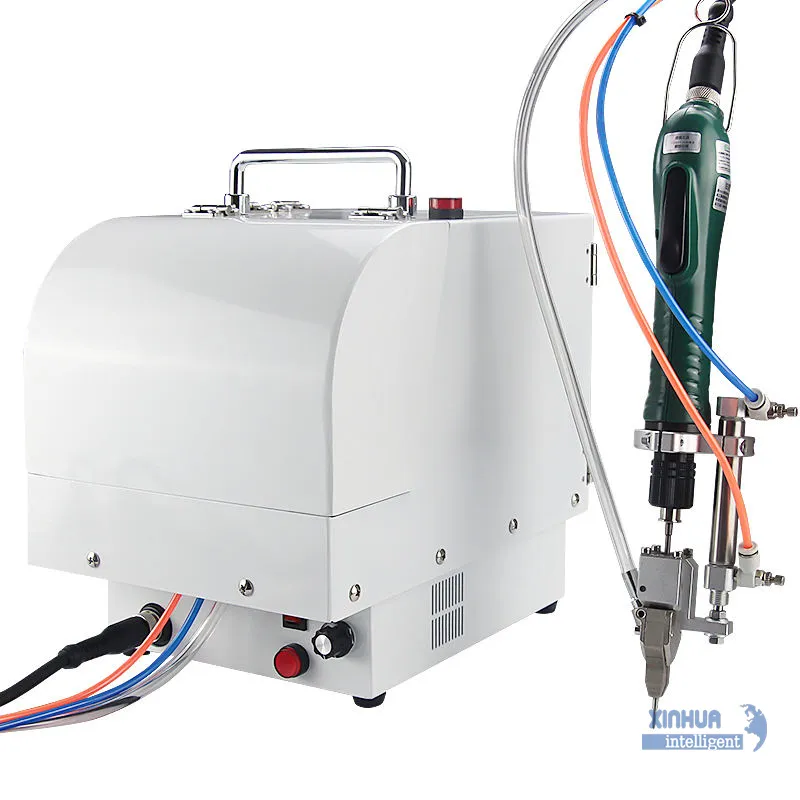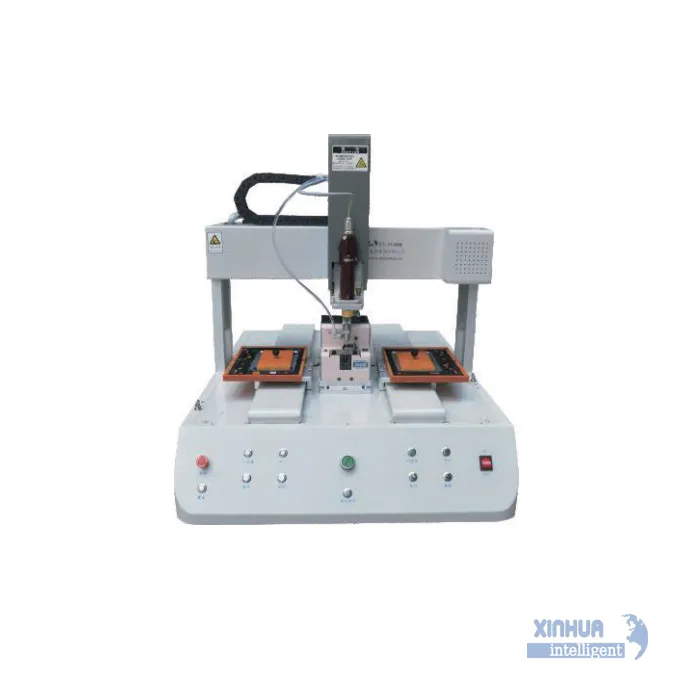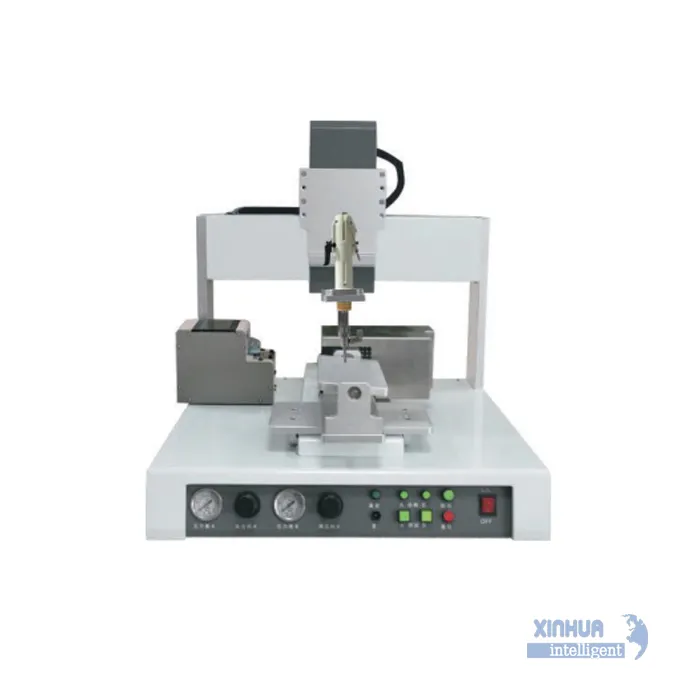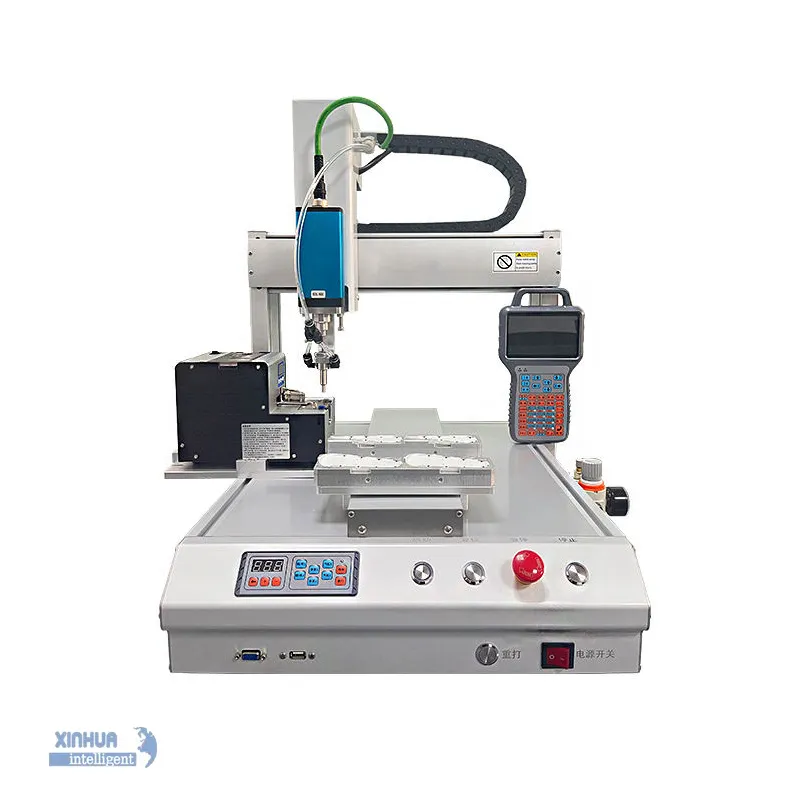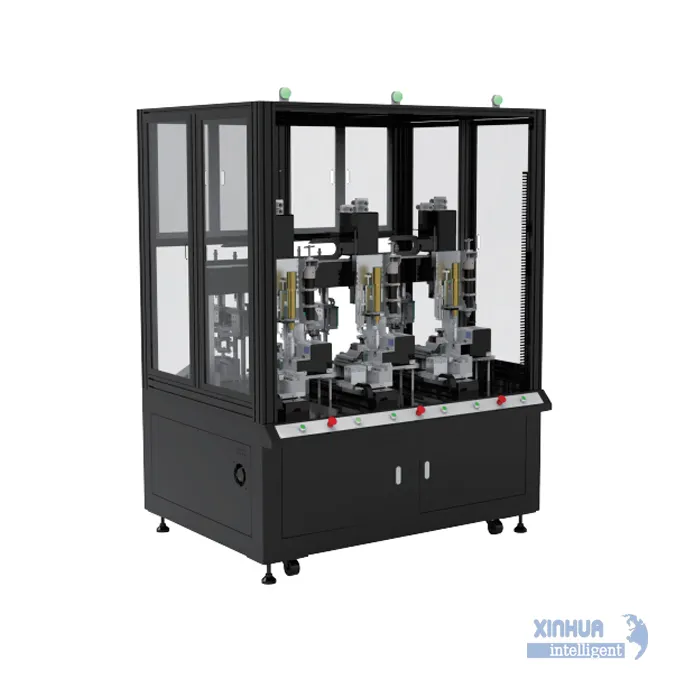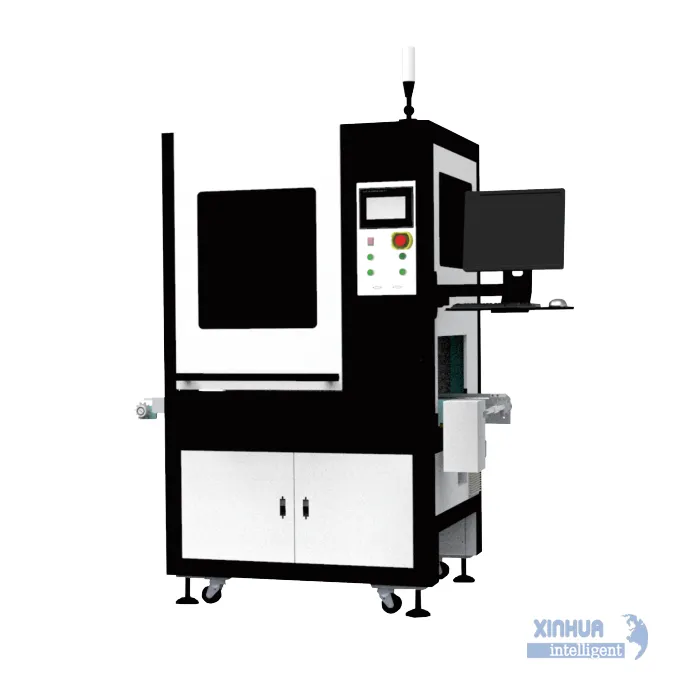The workflow of a handheld series automatic screw feeding machine typically involves several key steps to efficiently feed screws to the screwdriver in an automated manner:
-
Screw Storage and Sorting
Screws are initially loaded in bulk into a feeder system, such as a step feeder or vibratory feeder, which stores, sorts, and separates the screws, orienting them correctly (usually with the screw head facing up) for feeding. -
Screw Transport
The oriented screws are then transported from the feeder through a feeding tube or pipe to the handheld screwdriver tool. Transport is often done using an air flow or pneumatic system that blows or pushes the screw along the tube, or by gravity in some designs. -
Screw Delivery at the Tool
A sensor or mechanical shutter holds the screw at the tip of the feeding tube near the screwdriver bit, ready for pick-up. The screw is held in the correct orientation so that when the operator triggers the screwdriver, it engages the screw head immediately. -
Screw Tightening Process
The operator presses the trigger or lever on the handheld screwdriver. A pneumatic or electric actuator drives the screwdriver bit into the screw and screws it into the workpiece automatically. Some systems have a fast automatic bit stroke to position the bit quickly for engaging the next screw. -
Concurrent Feeding for Efficiency
While one screw is being tightened, the system simultaneously separates and loads the next screw into the feeding tube, preparing it for the subsequent cycle. This overlap minimizes cycle time and maximizes productivity. -
Control and Monitoring
A tightening controller manages the entire screw feeding and tightening process, monitoring parameters like torque, stroke, and screw presence to ensure quality and reliability.

The overall effect is reduced manual screw handling, lower operator fatigue, improved fastening accuracy, and faster assembly cycles. Such systems are used widely in industries like electronics, automotive, appliances, and aerospace for high-volume, repetitive screw assembly tasks.
In summary, the workflow consists of screw storage and sorting, pneumatic or gravity feed transport through a tube, precise screw delivery at the screwdriver bit, automated screw driving upon trigger, concurrent preparation of the next screw, and integrated control and monitoring of the process for efficiency and consistency.

